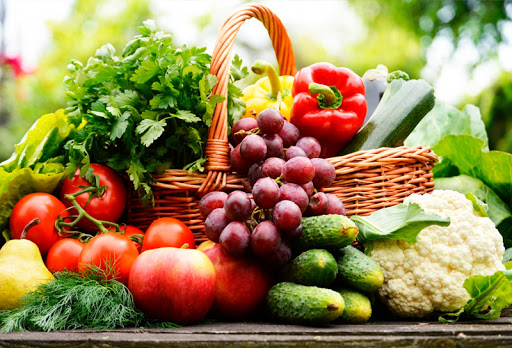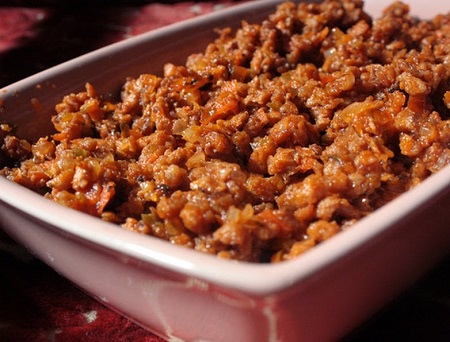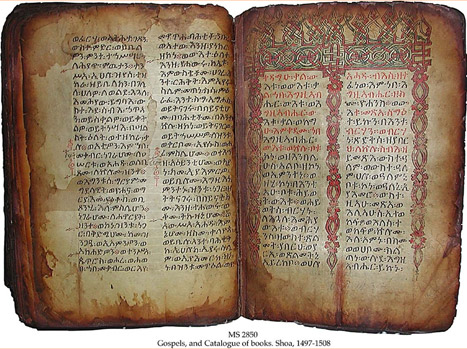Millet
VIEW:27 DATA:01-04-2020
MILLET (probably Panicum miliaceum or perhaps Andropogon sorghum) is mentioned in Eze_4:9 (only) as an ingredient in bread. See Food, § 2.
Hastings' Dictionary of the Bible
Edited by James Hastings, D.D. Published in 1909
Eze_4:9, dochan, the Panicum miliaceum. Others say the Sorghum vulgare, or dourrha.
Fausset's Bible Dictionary
By Andrew Robert Fausset, co-Author of Jamieson, Fausset and Brown's 1888.
Millet. A kind of grain. A number osf species are cultivated in the East. When green, it is used as fodder, and for bread when ripe. Eze_4:9. It is probable that both the Sorghum vulgare and the Panicum miliaceum were used, and the Hebrew, dochan, may denote either of these plants.
Smith's Bible Dictionary
By Dr. William Smith.Published in 1863
דחן , Eze_4:9, a kind of plant so called from its thrusting forth such a quantity of grains. Thus in Latin it is called millium, as if one stalk bore a thousand seeds. It has been supposed that the dochan means what is now called in the east durra; which, according to Niebuhr, is a sort of millet, and when made into bad bread with camel's milk, oil, butter, or grease, is almost the only food which is eaten by the common people in Arabia Felix. I found it so disagreeable, says he, that I should willingly have preferred plain barley bread to it. This illustrates the appointment of it to the Prophet Ezekiel as a part of his hard fare. Durra is also used in Palestine and Syria, and it is generally agreed that it yields much more than any other kind of grain. Hiller and Celsius insist that the dochan is the panic; but Forskal has expressly mentioned the dokn, holcus dochna, as a kind of maize, of considerable use in food; and Brown, in his Travels, describes the mode of cultivating it.
Biblical and Theological Dictionary by Richard Watson
PRINTER 1849.
mil?et, mil?it (דּחן, dōḥan; κέγχρος, kégchros): One of the ingredients of the prophet's bread (Eze_4:9). The Arabic equivalent is dukhn, the common millet, Panicum miliaceum, an annual grass 3 or 4 ft. high with a much-branched nodding panicle. Its seeds arc as small as mustard seeds and are used largely for feeding small birds, but are sometimes ground to flour and mixed with other cereals for making bread. The Italian millet, setaria Italica, known as Bengal grass, is also called in Arabic dukhn, and has a similar seed. A somewhat similar grain, much more widely cultivated as a summer crop, is the Indian millet - also called ?Egyptian maize? - the Sorghum annuum. This is known as dhurah in Arabic, and the seed as dhurah beiḍâ, ?white dourra.? It is a very important crop, as it, like the common millet, grows and matures without any rain. It is an important breadstuff among the poor.
Both the common millet and the dourra were cultivated in Egypt in very ancient times; the Hebrew dōḥan was certainly the first, but may include all three varieties.
International Standard Bible Encyclopedia
PRINTER 1915.
Fig. 253?Millet?Panicum miliaceum
Millet occurs in Eze_4:9, where the Prophet is directed to take unto him wheat, and barley, and beans, and lentiles, and millet and fitches, and to put them into one vessel, and to make bread thereof for himself. All the grains enumerated in this verse continue to form the chief articles of diet in the East in the present day, as they appear to have done in ancient times. The common millet is cultivated from the middle of Europe to the most southern part of India and is sometimes cultivated in England on account of the seeds being used for feeding birds and poultry. But the grain is usually imported into this country from the Mediterranean. In India it is cultivated in the cold weather, that is, in the same season with wheat and barley, and is an article of diet with the inhabitants. Having mentioned the extreme points where this grain is cultivated, it is hardly necessary to state that it is produced in the intermediate countries. Tournefort says that in the Isle of Samos the inhabitants, in preparing their bread, knead together one half wheat and the other half barley and millet mixed together. It is also an article of diet both in Persia and India, and is so universally cultivated in the East as one of their smaller corn-grasses, that it is most likely to be the kind alluded to in the passage of Ezekiel.
The Popular Cyclopedia of Biblical Literature
by John Kitto.
Millet
(דֹּחִן, do'chan, so called from the dark-green or smoky color of the leaf; Sept. κέγχρος,Vulg. nzilium) occurs in Scripture only in Eze_4:9, where the prophet is directed to take unto him wheat, and barley, and beans, and lentiles, and millet, and fitches, and to put them into one vessel, and to make bread thereof for himself. All the grains enumerated in this verse continue to form the chief articles of diet in the East at the present day, as they appear to have done in ancient times. The Hebrew word dochan is identical with the Arabic dukhun, which is applied in the present day by the Arabs to a small grain cultivated from the middle of Europe to the most southern part of India. This is the common millet, Panicum miliaceum of botanists, which is sometimes cultivated in England on account of the seeds being used for feeding birds and poultry. But the grain is usually imported from the Mediterranean. In India it is cultivated in the cold weather, that is, in the same season with wheat and barley, and is an article of diet with the inhabitants.
The culms are erect, from two to four feet high, the whole plant being very hairy; leaves large, with long sheaths, which involve most part of the culm; panicle oblong, much branched, bending down with the weight of the grain: glumes cuspidate; corol three- valved, adventitious valve emarginate; seed oval and smooth, colored longitudinally with five streaks. The name, miliaceua, is said to have been applied to this plant from its producing such a quantity of grain, as if one stalk bore a thousand seeds. Tournefort says (Voyage, 2:95) that in the isle of Samos the inhabitants, in preparing their bread, knead together one half wheat and the other half barley and millet mixed together. It is also an article of diet both in Persia and India. Forskal applies the name dukhun to another corn-grass, which he first found in a garden at Rosetta, cultivated on account of its seed being given as food to birds. Afterwards he found it commonly cultivated in Arabia. It grows to a great size, being about five cubits in height, with seeds of the size of rice. To it he has given the name of Holcus dochna, but the plant is as yet unknown to botanists. The Biblical millet is confounded by many writers with the broom-corn varieties, which belong to the genus Sorghum, a species of which is the modern Egyptian durra. It is possible that the Heb. dochan includes the common species, Sorhum vuggare. There is, however, little doubt that the true dukhun of Arab authors is the above-described Panicum miliaceum. This is so universally cultivated in the East as one of their smaller corn- grasses that it is most likely to be the kind chiefly alluded to in the passage of Ezekiel. Two cultivated species of Panicunz are named as occurring in Palestine, viz. P. miliaceum and P. italicum (Strand's Flor. Palest. Nos. 35, 37). The genera Sorghumn and Panicum belong to the natural order Graminee, perhaps the most important order in the vegetable kingdom. See Celsii Hierobot. 1:453 sq.; Oedmann, Verm. Sanml. 5:92 sq.; Niebuhr, Arabia, page 295; Trav. 1:158; Forskal, Flora AEgypt. page 174; Wellsted, Tray. 1:295; Gesenius, Thes. Heb. page 333; Penny Cyclopaedia, s.v. Panicum.
CYCLOPEDIA OF BIBLICAL, THEOLOGICAL AND ECCLESIASTICAL
press 1895.
Hastings' Dictionary of the Bible
Edited by James Hastings, D.D. Published in 1909
Eze_4:9, dochan, the Panicum miliaceum. Others say the Sorghum vulgare, or dourrha.
Fausset's Bible Dictionary
By Andrew Robert Fausset, co-Author of Jamieson, Fausset and Brown's 1888.
Millet. A kind of grain. A number osf species are cultivated in the East. When green, it is used as fodder, and for bread when ripe. Eze_4:9. It is probable that both the Sorghum vulgare and the Panicum miliaceum were used, and the Hebrew, dochan, may denote either of these plants.
Smith's Bible Dictionary
By Dr. William Smith.Published in 1863
דחן , Eze_4:9, a kind of plant so called from its thrusting forth such a quantity of grains. Thus in Latin it is called millium, as if one stalk bore a thousand seeds. It has been supposed that the dochan means what is now called in the east durra; which, according to Niebuhr, is a sort of millet, and when made into bad bread with camel's milk, oil, butter, or grease, is almost the only food which is eaten by the common people in Arabia Felix. I found it so disagreeable, says he, that I should willingly have preferred plain barley bread to it. This illustrates the appointment of it to the Prophet Ezekiel as a part of his hard fare. Durra is also used in Palestine and Syria, and it is generally agreed that it yields much more than any other kind of grain. Hiller and Celsius insist that the dochan is the panic; but Forskal has expressly mentioned the dokn, holcus dochna, as a kind of maize, of considerable use in food; and Brown, in his Travels, describes the mode of cultivating it.
Biblical and Theological Dictionary by Richard Watson
PRINTER 1849.
mil?et, mil?it (דּחן, dōḥan; κέγχρος, kégchros): One of the ingredients of the prophet's bread (Eze_4:9). The Arabic equivalent is dukhn, the common millet, Panicum miliaceum, an annual grass 3 or 4 ft. high with a much-branched nodding panicle. Its seeds arc as small as mustard seeds and are used largely for feeding small birds, but are sometimes ground to flour and mixed with other cereals for making bread. The Italian millet, setaria Italica, known as Bengal grass, is also called in Arabic dukhn, and has a similar seed. A somewhat similar grain, much more widely cultivated as a summer crop, is the Indian millet - also called ?Egyptian maize? - the Sorghum annuum. This is known as dhurah in Arabic, and the seed as dhurah beiḍâ, ?white dourra.? It is a very important crop, as it, like the common millet, grows and matures without any rain. It is an important breadstuff among the poor.
Both the common millet and the dourra were cultivated in Egypt in very ancient times; the Hebrew dōḥan was certainly the first, but may include all three varieties.
International Standard Bible Encyclopedia
PRINTER 1915.
Fig. 253?Millet?Panicum miliaceum
Millet occurs in Eze_4:9, where the Prophet is directed to take unto him wheat, and barley, and beans, and lentiles, and millet and fitches, and to put them into one vessel, and to make bread thereof for himself. All the grains enumerated in this verse continue to form the chief articles of diet in the East in the present day, as they appear to have done in ancient times. The common millet is cultivated from the middle of Europe to the most southern part of India and is sometimes cultivated in England on account of the seeds being used for feeding birds and poultry. But the grain is usually imported into this country from the Mediterranean. In India it is cultivated in the cold weather, that is, in the same season with wheat and barley, and is an article of diet with the inhabitants. Having mentioned the extreme points where this grain is cultivated, it is hardly necessary to state that it is produced in the intermediate countries. Tournefort says that in the Isle of Samos the inhabitants, in preparing their bread, knead together one half wheat and the other half barley and millet mixed together. It is also an article of diet both in Persia and India, and is so universally cultivated in the East as one of their smaller corn-grasses, that it is most likely to be the kind alluded to in the passage of Ezekiel.
The Popular Cyclopedia of Biblical Literature
by John Kitto.
Millet
(דֹּחִן, do'chan, so called from the dark-green or smoky color of the leaf; Sept. κέγχρος,Vulg. nzilium) occurs in Scripture only in Eze_4:9, where the prophet is directed to take unto him wheat, and barley, and beans, and lentiles, and millet, and fitches, and to put them into one vessel, and to make bread thereof for himself. All the grains enumerated in this verse continue to form the chief articles of diet in the East at the present day, as they appear to have done in ancient times. The Hebrew word dochan is identical with the Arabic dukhun, which is applied in the present day by the Arabs to a small grain cultivated from the middle of Europe to the most southern part of India. This is the common millet, Panicum miliaceum of botanists, which is sometimes cultivated in England on account of the seeds being used for feeding birds and poultry. But the grain is usually imported from the Mediterranean. In India it is cultivated in the cold weather, that is, in the same season with wheat and barley, and is an article of diet with the inhabitants.
The culms are erect, from two to four feet high, the whole plant being very hairy; leaves large, with long sheaths, which involve most part of the culm; panicle oblong, much branched, bending down with the weight of the grain: glumes cuspidate; corol three- valved, adventitious valve emarginate; seed oval and smooth, colored longitudinally with five streaks. The name, miliaceua, is said to have been applied to this plant from its producing such a quantity of grain, as if one stalk bore a thousand seeds. Tournefort says (Voyage, 2:95) that in the isle of Samos the inhabitants, in preparing their bread, knead together one half wheat and the other half barley and millet mixed together. It is also an article of diet both in Persia and India. Forskal applies the name dukhun to another corn-grass, which he first found in a garden at Rosetta, cultivated on account of its seed being given as food to birds. Afterwards he found it commonly cultivated in Arabia. It grows to a great size, being about five cubits in height, with seeds of the size of rice. To it he has given the name of Holcus dochna, but the plant is as yet unknown to botanists. The Biblical millet is confounded by many writers with the broom-corn varieties, which belong to the genus Sorghum, a species of which is the modern Egyptian durra. It is possible that the Heb. dochan includes the common species, Sorhum vuggare. There is, however, little doubt that the true dukhun of Arab authors is the above-described Panicum miliaceum. This is so universally cultivated in the East as one of their smaller corn- grasses that it is most likely to be the kind chiefly alluded to in the passage of Ezekiel. Two cultivated species of Panicunz are named as occurring in Palestine, viz. P. miliaceum and P. italicum (Strand's Flor. Palest. Nos. 35, 37). The genera Sorghumn and Panicum belong to the natural order Graminee, perhaps the most important order in the vegetable kingdom. See Celsii Hierobot. 1:453 sq.; Oedmann, Verm. Sanml. 5:92 sq.; Niebuhr, Arabia, page 295; Trav. 1:158; Forskal, Flora AEgypt. page 174; Wellsted, Tray. 1:295; Gesenius, Thes. Heb. page 333; Penny Cyclopaedia, s.v. Panicum.
CYCLOPEDIA OF BIBLICAL, THEOLOGICAL AND ECCLESIASTICAL
press 1895.

BUSCADAVERDADE
Visite o nosso canal youtube.com/buscadaverdade e se INSCREVA agora mesmo! Lá temos uma diversidade de temas interessantes sobre: Saúde, Receitas Saudáveis, Benefícios dos Alimentos, Benefícios das Vitaminas e Sais Minerais... Dê uma olhadinha, você vai gostar! E não se esqueça, dê o seu like e se INSCREVA! Clique abaixo e vá direto ao canal!
Saiba Mais
-
 Nutrição
Nutrição
Vegetarianismo e a Vitamina B12 -
 Receita
Receita
Como preparar a Proteína Vegetal Texturizada -
 Arqueologia
Arqueologia
Livro de Enoque é um livro profético?
Tags

